Mountain Holidays - Majella National Park
DISCOVERING A WONDERFUL TERRITORY
Fara San Martino
The Capital of Pasta
Fara San Martino stands out for the spectacular San Martino gorges that rise majestically on its horizon. These natural formations, sculpted by the millennial action of water that flows impetuously between the rocks, are evidence of the ancient geological history of this land and enchant the eyes of visitors with their wild beauty. The San Martino gorges represent a place of rare charm, where wild nature mixes with spirituality and local folklore.
Furthermore, the presence of numerous pasta factories that dot the territory confirms the reputation of Fara San Martino as one of the nerve centers of high-quality pasta production. The centuries-old traditions of pasta processing mix with modern techniques, giving life to products of extraordinary quality and authentic taste.
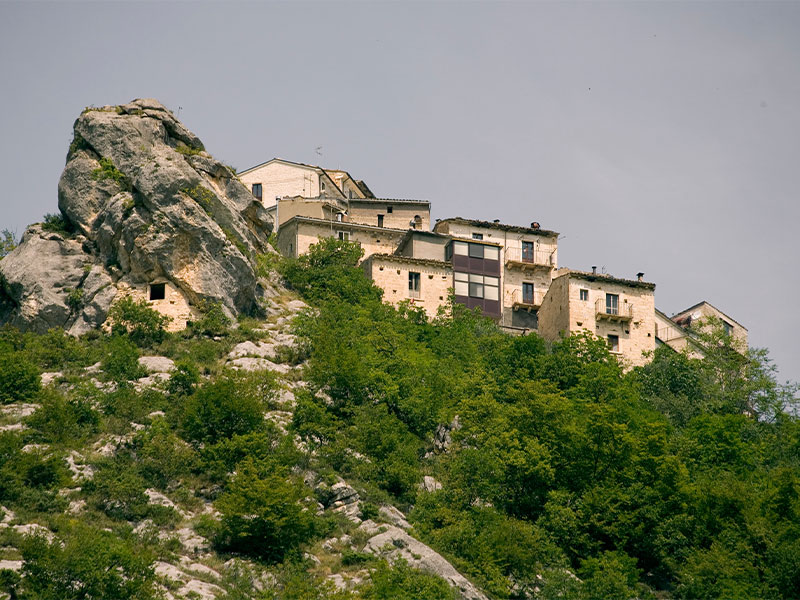
Pennapiedimonte
The Pinna at the foot of the Mountain
Immersed in the majestic mountains of the Majella, lies Pennapiedimonte, also known as 'the Pinna at the foot of the Mountain'. This charming village extends on the eastern side of the Majella National Park, between a minimum altitude of 250 meters above sea level in the locality of 'Laio', and a maximum of 2692 meters on Mount Focalone, Pennapiedimonte boasts a privileged position that offers breathtaking views and uncontaminated nature.
The town stands on a steep ridge overlooking the valley of the Avello river, giving residents and visitors a spectacular view of the wild beauty of the surroundings. The houses are characterized by the typical local stone architecture, many of which have been partially dug directly into the living rock. The stepped layout of the houses, the narrow streets that wind between them and the distinctive architectural elements such as cornices, capitals, portals and sculptures in worked stone, invite visitors to lose themselves in the ancient streets of the village, discovering suggestive corners and picturesque views at every step.
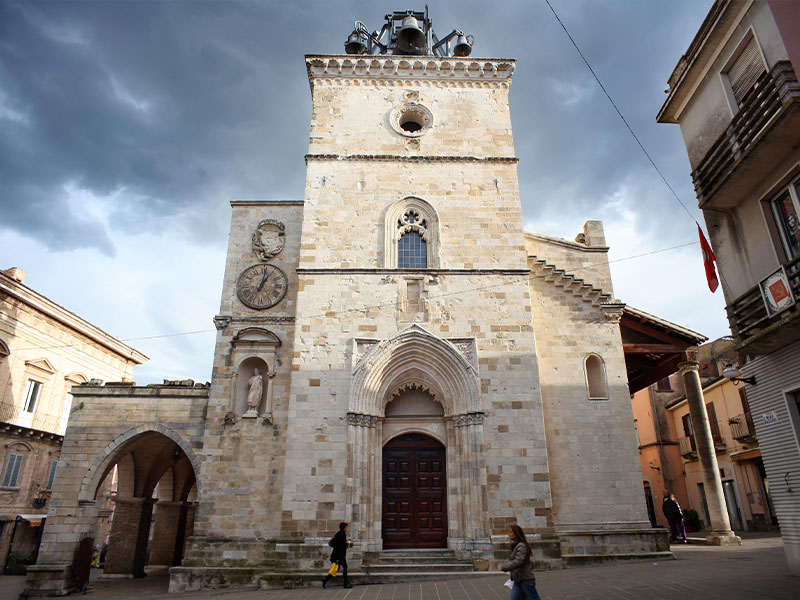
Guardiagrele
City of stone
Guardiagrele, known as the 'city of stone' immortalized in the pages of Gabriele d'Annunzio in his masterpiece 'The Triumph of Death', is a fascinating village that carries with it the deep roots of ancient history. Founded and colonized by the Benedictines, who built a majestic monastery there, Guardiagrele reached its peak around the 12th century, when its cultural and economic importance was at its peak.
The winding streets and narrow alleys of the historic center are tangible evidence of this glorious past, with their medieval architecture that tells stories of noble families, ancient churches and thousand-year-old towers. Every corner of Guardiagrele is permeated by a magical atmosphere that seems to revive the glories of a distant era, capturing the imagination of anyone who ventures into its cobbled streets. For those who visit this enchanted village, it is like taking a journey through time, immersing themselves in the evocative atmospheres of the past while admiring the works of art that still adorn its streets and squares today.
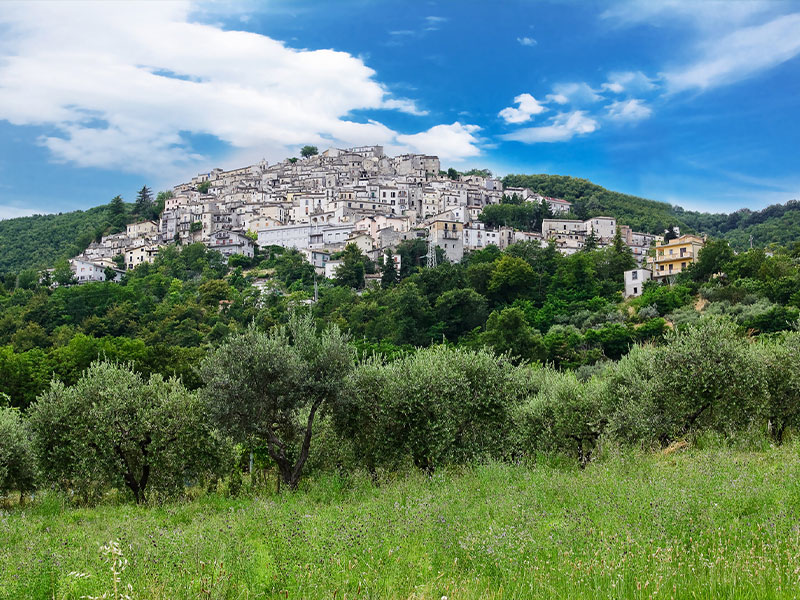
Pretoro
Suspended on a rocky spur that rises from the imposing slopes of the Majella, Pretoro presents itself as a village set in the same stone. The history of Pretoro has its roots in the distant 1600s, when the Castle of Pretoro, perched on the edge of the rock and known as 'Castrum Pretorii de Theti', was destroyed. Since then, the village has developed around these ruins, preserving its aura of ancient grandeur intact.
But it is only when you reach a panoramic point that you can truly appreciate the magnificence of Pretoro and its surrounding environment. The majestic mountains and lush forests stand as silent guardians of the village, creating a breathtaking scenery that enchants the eyes and the soul. In the heart of Pretoro, the San Domenico Center for the dissemination of cultural and natural aspects offers a unique opportunity to immerse yourself in the rich history and unspoiled nature of this region. Pretoro is much more than a simple village: it is a place where time stands still and history mixes with nature, creating an unforgettable experience for anyone privileged enough to visit.
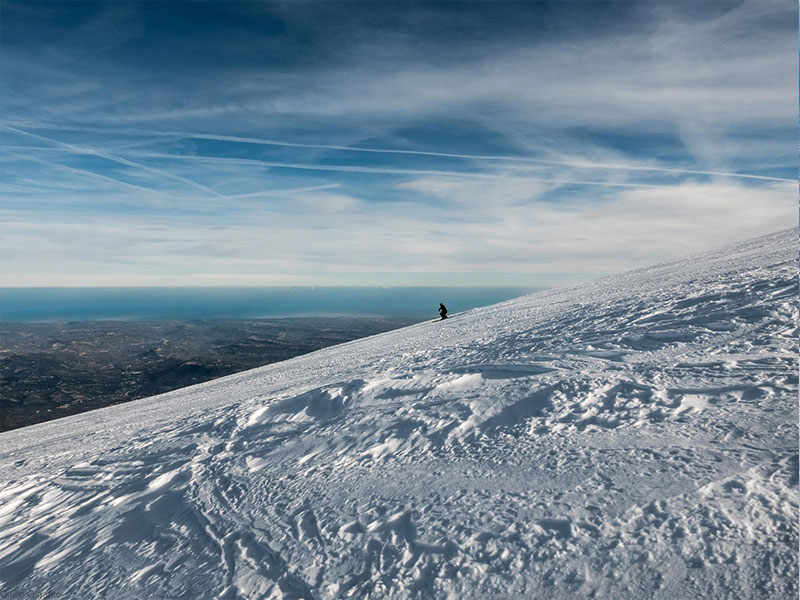
Passo Blockhaus Lanciano
Immersed in the heart of the Abruzzo Apennines, Passo Lanciano (at 1310 meters above sea level) stands as a suggestive pass that connects the provinces of Chieti and Pescara, on the northern side of the majestic Maiella massif. This mountain pass can be reached via two panoramic roads: one that winds from Pretoro and the other that starts from Scafa-Lettomanoppello.
From Passo Lanciano, the road continues further upwards, heading towards the Maielletta and then towards Blockhaus, the highest point in the area, famous for being a destination loved by lovers of skiing and outdoor activities. Along the way, you can stop at the Bruno Pomilio refuge, an oasis of tranquility immersed in uncontaminated nature. The roads leading to Passo Lanciano offer travelers breathtaking views and an unforgettable travel experience, crossing landscapes characterized by green valleys and imposing mountains.

Roccascalegna
Located on a gentle hill halfway between the splendid Abruzzo coast and the imposing Maiella massif, stands the village of Monte San Pancrazio, caressed by the sinuous waters of the Sangro river. Its name, with Lombard roots, seems to evoke the figure of a steep mountain, suggesting the position of the town that lies on the side of Monte San Pancrazio.
This ancient village, immersed in an uncontaminated natural landscape, has its origins in the Middle Ages, and still today preserves the charm of a bygone era. Among the unmissable attractions, the scenic castle stands out, a mighty defensive structure dating back to the 11th century, crowned by four majestic towers and placed in a dominant position on the top of a rocky spur. Next to the castle, there is the evocative church of San Cosmo and Damiano, a silent witness of the centuries gone by, and the graceful church of San Pietro, which enchants visitors with its Renaissance architecture. But the real jewel of Monte San Pancrazio is the Abbey of San Pancrazio, which preserves the traces of a glorious past. Its ancient walls tell stories of devotion and power, while the frescoes and works of art inside convey the spiritual and cultural heritage of centuries past.
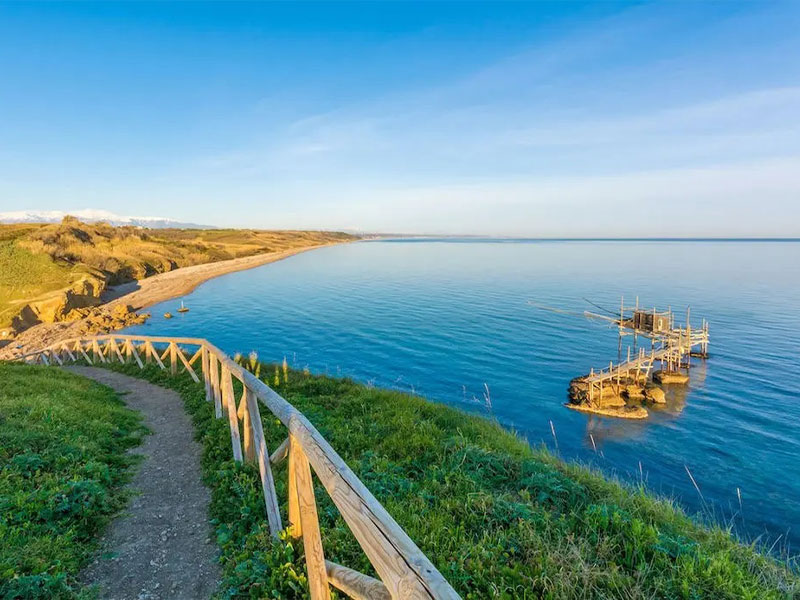
Costa dei Trabocchi
The Costa dei Trabocchi enchants with its breathtaking landscape along the Abruzzo coast, hosting a series of trabocchi that stand as living testimonies of the local maritime tradition. These ancient and fascinating structures are real wooden stilts, once used with skill by fishermen to catch fish from the surrounding waters. Along the Costa dei Trabocchi, the clear waters of the Adriatic Sea blend harmoniously with the postcard-like scenery, giving visitors an unforgettable spectacle.

Lanciano
In the heart of Abruzzo, the city of Lanciano stands out for its evocative duality: a modern, flat part and an ancient, rich in history, divided into four districts that wind through the surrounding hills. This contrast offers unforgettable views and breathtaking panoramas that capture the attention of anyone who visits the city.
Dating back to the 5th century BC, the ancient village of Lanciano, known as Lancianovecchia, rises majestically on the Erminio hill, offering a picturesque setting that enchants visitors with its timeless charm. Alongside this ancient nucleus, the districts of Borgo, Civitanova and Sacca developed over the centuries, witnesses to the historical and urban evolution of the city.
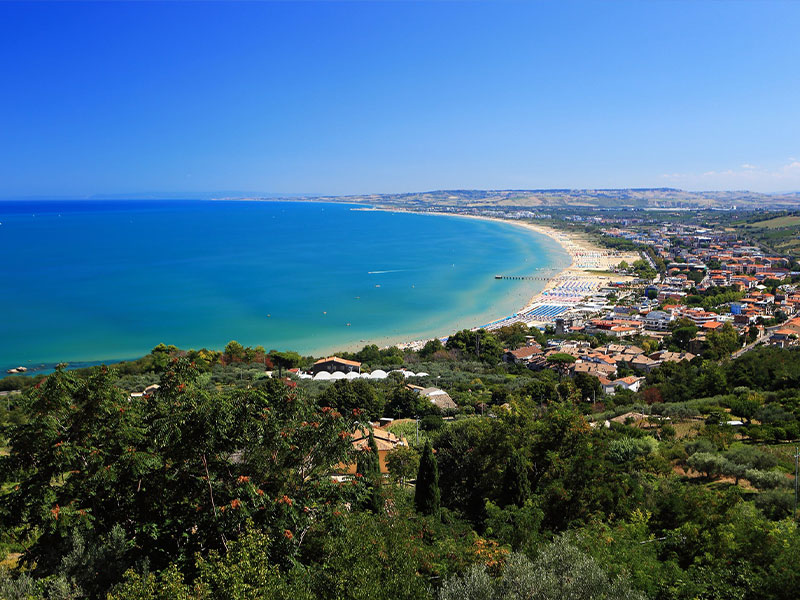
Vasto
Overlooking the infinite blue of the sea, just a few steps from the coast, Vasto invites you to explore it on foot, immersing yourself in its picturesque views typical of Abruzzo. During the day, visitors can enjoy the spectacular views of the coast, while summer evenings come alive with nightlife along the main streets, from Corso Garibaldi to Piazza Rossetti, and from the promenades along the sea on both sides of Palazzo D’Avalos.
For those who wish to discover the rich historical, monumental and religious heritage of Vasto, there are many attractions to explore. From the suggestive Piazza Rossetti to the majestic Caldoresco Castle, from the fascinating Carmine Church to the imposing Cathedral, every corner of the city tells a thousand-year-old story that fascinates and enchants visitors.

Roccaraso
On the southern edge of the Cinque Miglia plateau, nestled between the majestic Monte Greco and the picturesque Pizi mountains, stands Roccaraso, a jewel of mountainous Abruzzo and the jewel in the crown of the Maiella National Park.
During the Second World War, Roccaraso became one of the "strongholds" of the Gustav line, a strategic point between Ortona and Cassino. Despite the challenges and difficulties of time, the village has retained its historic charm and its role as a renowned tourist destination. The historic center of Roccaraso boasts architectural treasures of inestimable value, including the majestic church of Santa Maria Assunta, with its baroque travertine facade that stands proudly in the heart of the town.
Roccaraso attracts tourists in search of adventure and relaxation, becoming one of the first mountain destinations to welcome visitors eager to immerse themselves in unspoiled nature and enjoy the thrills of winter sports.
